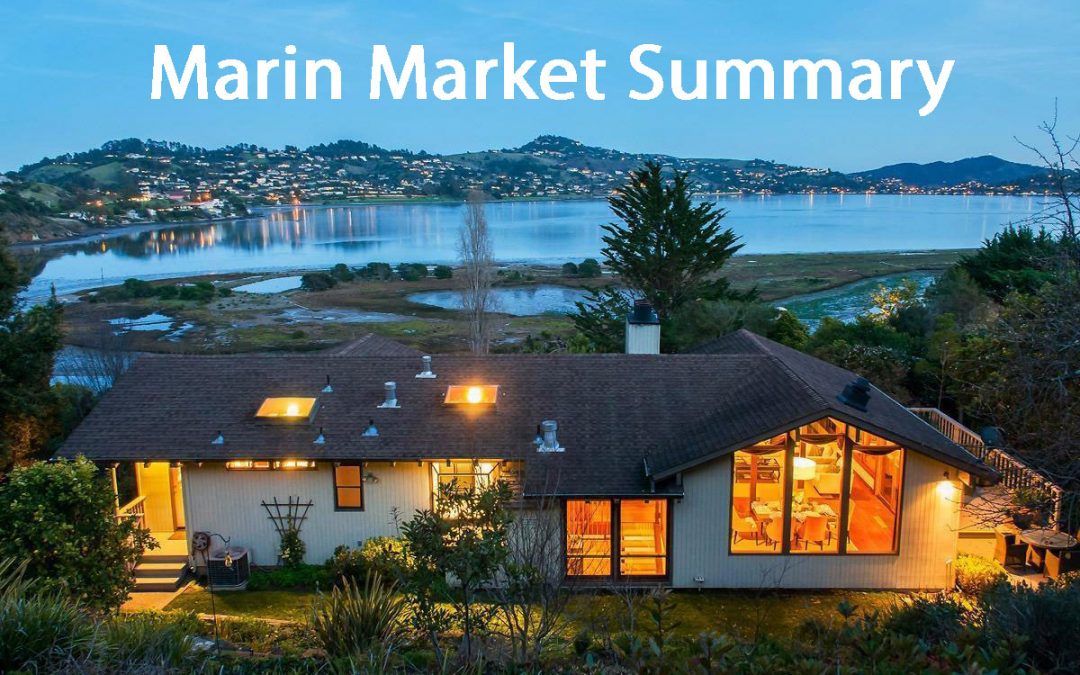As we have been noting for several months, the Marin market has been normal, or to put it another way, balanced. Sellers do not have an advantage, as they have for the better part of the last six years, nor do Buyers have an advantage, as they did in 2008-2011.
Year end market statistics for Marin County home sales reflect that. The number of homes sold in 2019 was 2844, virtually unchanged from 2018, when 2,787 homes were sold. That is a 2% increase, so almost negligible.
Average sale price also stayed virtually the same, dropping from $1,477,652 in 2018 to $1,462,958 in 2019. That is slightly less than a 1% change.
We kept digging into the stats to try and find differences, but even selling price per square foot was virtually unchanged: $696 in 2018, $691 in 2019.
Individual town by town market data will be available in a few weeks, and we will dig deeper into that soon. But overall the market has basically been unchanged in price and volume for the last two years.
So what do we see for next year? One of the most interesting stats of the year is that California’s growth rate in population has ground to a halt. Data published in July showed the state population increased only .35 % in 2018, the slowest rate in history! Families having fewer children is noted as one major factor, as well as people leaving the state because of…..high housing prices.
But do not expect a huge shift anytime soon in demand and pricing, at least in Marin and the Bay area. The economy continues to be very strong nationally, and the tech industry here continues to expand. Companies in San Francisco are still hiring, and paying even higher prices to get employees in. As they eventually start to have families, they start looking to Marin County as a place to live. Great schools, and a good commute continue to make Marin a desirable spot for San Francisco workers.
Prior to this year, we had six years of double digit price increases for homes. Average sale price for the whole county in 2009 was $848,438, vs. last year’s $1,462,958!That can not continue forever, which is why we saw pricing increases level off this year. But our belief is that the lack of new home creation, combined with the desire of the Bay area as a place to live, will make 2020 another “normal” year.
Finally, interest rates are also really good. Loans were predicted to rise to nearly 6% in 2019, and instead they fell, dramatically. Mortgages are still available under 4%. Given that 2020 is an election year, it is not likely there will be significant increases in interest rates this year. That will continue to keep buyers active.
Gov. Newsom has pledged that the state will build 3.5 Million new homes by 2025. The state is not anywhwere near close to meeting that goal, although there is a lot of effort underway to enhance new home construction. Our State Senator, Mark McGuire, is co-sponsoring a bill with Scott Wiener of San Francisco, that will dramatically affect housing law in the state. SB 50 will override local zoning laws; allowing mid-rise apartment buildings to be constructed within a half-mile of subway stops or within a quarter-mile of high-frequency bus stops, or in “jobs-rich” communities.Single family zoning near transit is virtually eliminated. It would also allow property owners to convert single-family houses anywhere in the state into four-unit apartment houses, although they would have to work within the same general size and shape of the existing structure.
Keep an eye on this one – it will be very controversial to say the least. Politically the environment is changing, even in Marin. San Rafael recently approved several large new condo developments, which several years ago would have been a major political issue. But lots of people are thinking we need to expand housing somewhat, even in Marin, as, for example, their children reach adulthood and move out of the area because housing is unaffordable. It will be interesting to watch this unfold over the next few years.


Recent Comments